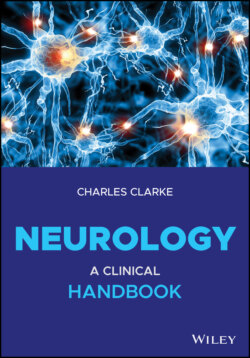Читать книгу Neurology - Charles H. Clarke - Страница 34
Extrapyramidal System and Basal Ganglia Region
ОглавлениеThe word extrapyramidal is used in various ways. In neurology, extrapyramidal describes disorders such as Parkinson’s disease – the slowing, stiffness and/or tremor. Extrapyramidal is also sometimes used to include dyskinesias, such as chorea, hemiballismus or dystonia. In neuroanatomy, as a more general term, extrapyramidal relates to the basal ganglia region (Figure 2.3), that is:
Figure 2.2 Descending corticospinal pathways.
Source: Champney (2016).
Figure 2.3 Oblique coronal section: putamen, caudate, globus pallidus, subthalamic nucleus, substantia nigra.
Source: Champney (2016).
The striatum (caudate nucleus, putamen of lentiform nucleus, nucleus accumbens);
Globus pallidus (GP) – lateral and medial parts. The GP extends into the pars reticularis of the substantia nigra;
Subthalamic nucleus
Pars compacta of the substantia nigra.
Figure 2.4 A striatal motor loop. SMA ‐ supplementary motor area, VLN ‐ ventral lateral nucleus of thalamus, STN ‐ subthalamic nucleus, GPL ‐ globus pallidus (lateral), GPM ‐ globus pallidus (medial), SNpc ‐ substantia nigra pars compacta, CST‐ corticospinal tract.
Source: Fitzgerald (2010).
